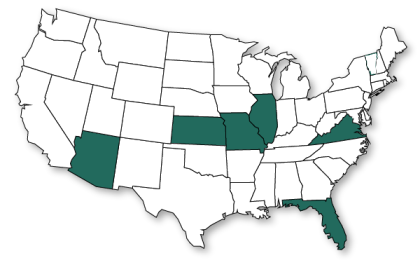 One of our clients recently was involved in a car accident that totaled the car and involved the police, fire department and a trip to the hospital. Fortunately, everyone is going to recover. He put together this thoughtful review of things to remember before an accident, and afterward. This is the first part of two.
One of our clients recently was involved in a car accident that totaled the car and involved the police, fire department and a trip to the hospital. Fortunately, everyone is going to recover. He put together this thoughtful review of things to remember before an accident, and afterward. This is the first part of two.
Wear Your Seatbelt – Everyone in our car were belted in. The driver of the other car was not. While the airbag probably saved him from a very serious injury, there is a dome-shaped dent in his windshield where his head plowed into it. That can’t be good.
Most of the pain and soreness we are experiencing comes from the sudden impact and from being restrained by the seatbelt. But that is far less serious than the kind of injury one gets from being flung around the interior of a car – or from being thrown from the vehicle.
Modern engineering makes even the worst accidents completely survivable. Our paramedic said that he and his colleagues have come to crash sites where the car looked so mangled he was sure there would be some serious – even life-threatening – injuries, only to discover the passengers and drivers walked away with just a few bumps and bruises thanks to modern car design. That said, the number-one predictor of serious injury is whether or not seatbelts are worn. I guarantee you that other guy wishes he’d worn his.
Keep an Emergency Kit In Your Car – Based on an article posted on the O’Connor Insurance website, I started to gather together an emergency kit for our cars. I had a flashlight and batteries, a first aid kit, some chemical light sticks that you snap and they glow – safer than a flare – as well as two fleece throws I picked up at a discount store for warmth in the winter. I even have a small duffel bag I picked up for three bucks at a thrift store to keep it all clean and together.
All these components were sitting useless in my basement workshop the night of the accident.
I was able to use my cell phone as a flashlight, but I could not talk to the emergency dispatcher AND watch my family to make sure they were OK at the same time. I really wish I’d had that flashlight.
Help arrived quickly, but on that cold night we could not get blankets from the ambulance fast enough. The ladies were cold as they waited to be removed from the mangled car. If the accident had happened in a rural area, or if the weather had been in the teens (as it was a few days later), my wife and sister-in-law might have been in shock from their otherwise minor injuries long before help arrived.
I now have that bag put together and into our rental car, and it goes into her new vehicle along with a few additional items.
Did I mention Wear Your Seatbelt? – In case I didn’t, always wear your seatbelt. Not wearing your seatbelt is a good deal dumber than not packing your emergency kit, which is pretty dumb.
Keep A Copy of Your Insurance In Your Car – As my wife and sister-in-law were being looked after, the cops were after me to come up with the insurance card. I rifled through the glove box, and it was not there. My wife keeps it in her purse, which I did not know at the time.
At the hospital, I left the girls in the care of the medical staff and reported to registration to have myself looked over. As I was talking to the admissions nurse, two cops approached and asked if I had come up with an insurance card. I said I had not, thinking it would be OK to deal with this later. They informed me that if I did not produce it for them they would have to write a ticket.
I was peeved, but as it turns out the cops are that persistent for good reason. If the police reports do not have insurance information, it creates great difficulties down the road as the loss is worked out among the insurance companies. The police will look in your glove box for you to find an insurance card, but in our case my wife had to direct them to check out her purse, which allowed the police to wrap up their report.
Click here to read Part Two.


